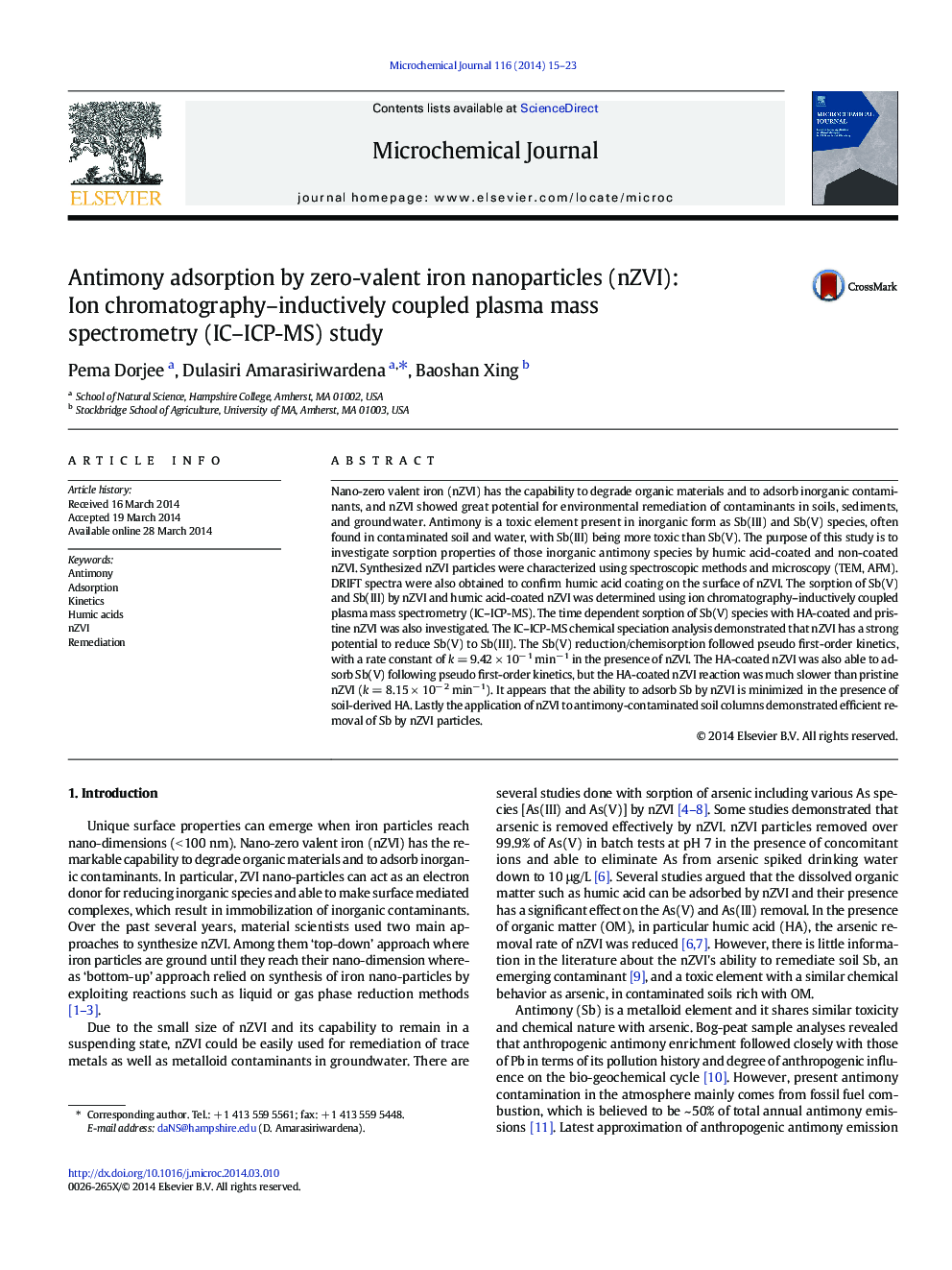| Article ID | Journal | Published Year | Pages | File Type |
|---|---|---|---|---|
| 7642806 | Microchemical Journal | 2014 | 9 Pages |
Abstract
Nano-zero valent iron (nZVI) has the capability to degrade organic materials and to adsorb inorganic contaminants, and nZVI showed great potential for environmental remediation of contaminants in soils, sediments, and groundwater. Antimony is a toxic element present in inorganic form as Sb(III) and Sb(V) species, often found in contaminated soil and water, with Sb(III) being more toxic than Sb(V). The purpose of this study is to investigate sorption properties of those inorganic antimony species by humic acid-coated and non-coated nZVI. Synthesized nZVI particles were characterized using spectroscopic methods and microscopy (TEM, AFM). DRIFT spectra were also obtained to confirm humic acid coating on the surface of nZVI. The sorption of Sb(V) and Sb(III) by nZVI and humic acid-coated nZVI was determined using ion chromatography-inductively coupled plasma mass spectrometry (IC-ICP-MS). The time dependent sorption of Sb(V) species with HA-coated and pristine nZVI was also investigated. The IC-ICP-MS chemical speciation analysis demonstrated that nZVI has a strong potential to reduce Sb(V) to Sb(III). The Sb(V) reduction/chemisorption followed pseudo first-order kinetics, with a rate constant of k = 9.42 Ã 10â 1 minâ 1 in the presence of nZVI. The HA-coated nZVI was also able to adsorb Sb(V) following pseudo first-order kinetics, but the HA-coated nZVI reaction was much slower than pristine nZVI (k = 8.15 Ã 10â 2 minâ 1). It appears that the ability to adsorb Sb by nZVI is minimized in the presence of soil-derived HA. Lastly the application of nZVI to antimony-contaminated soil columns demonstrated efficient removal of Sb by nZVI particles.
Related Topics
Physical Sciences and Engineering
Chemistry
Analytical Chemistry
Authors
Pema Dorjee, Dulasiri Amarasiriwardena, Baoshan Xing,
